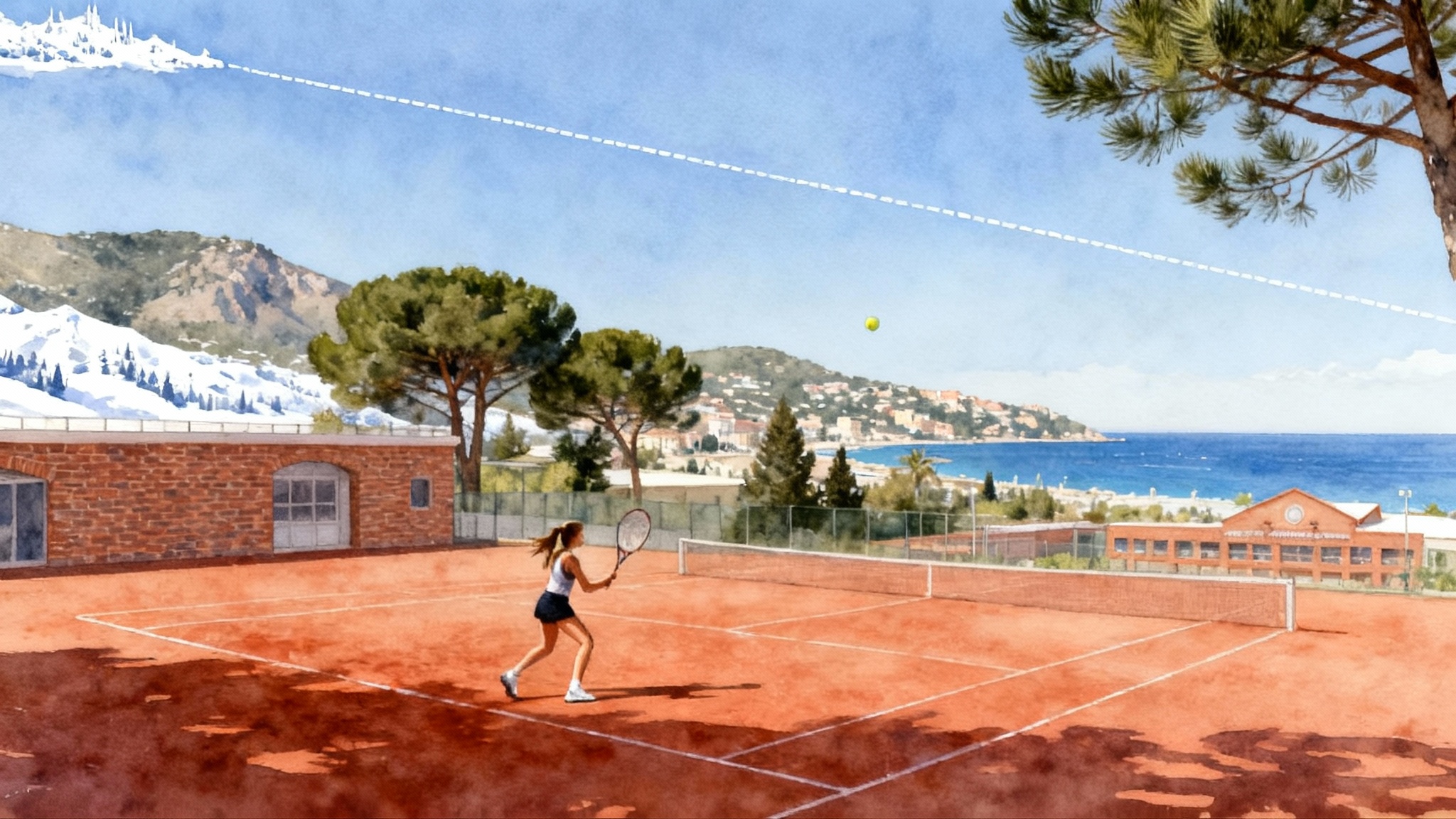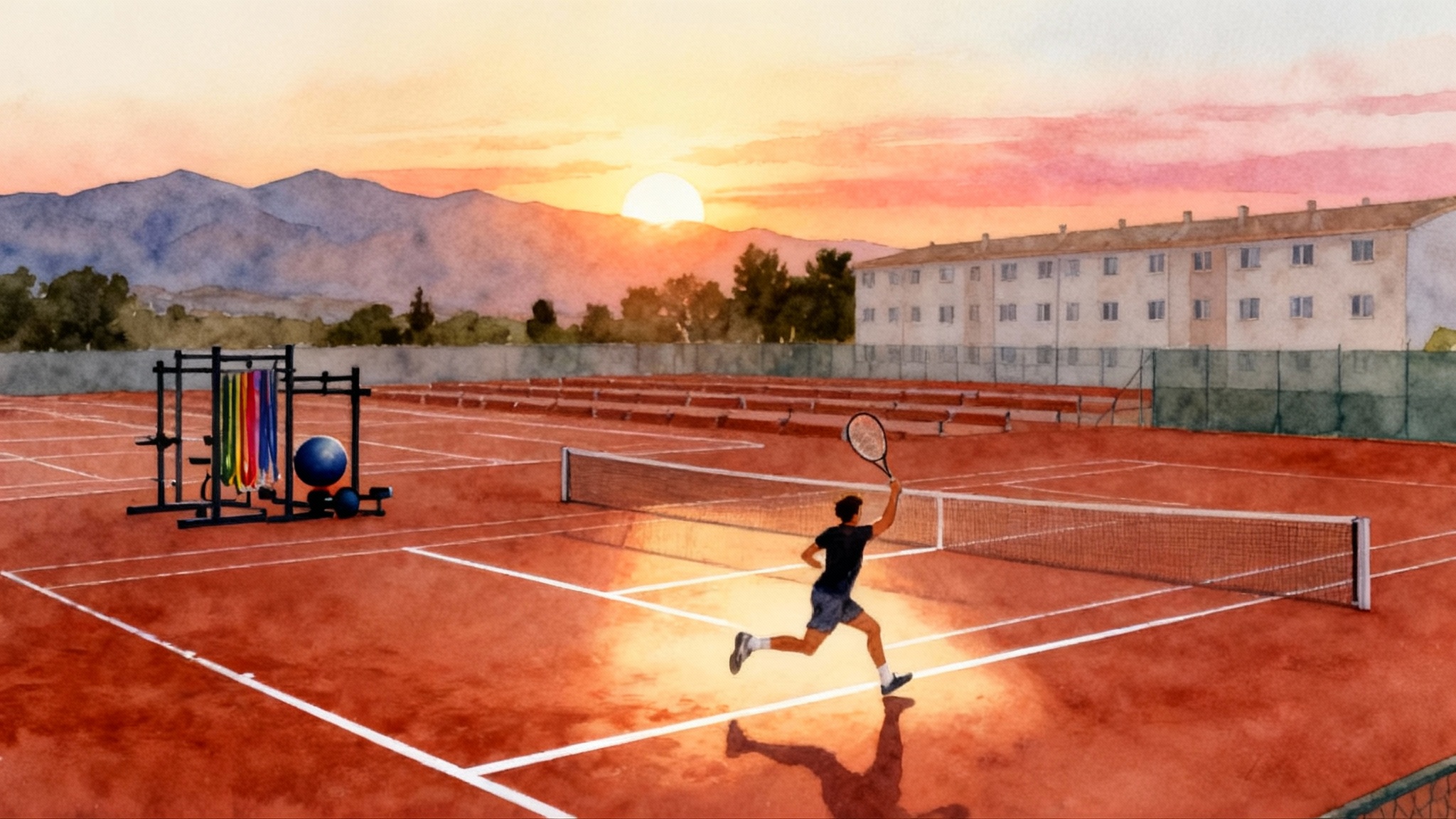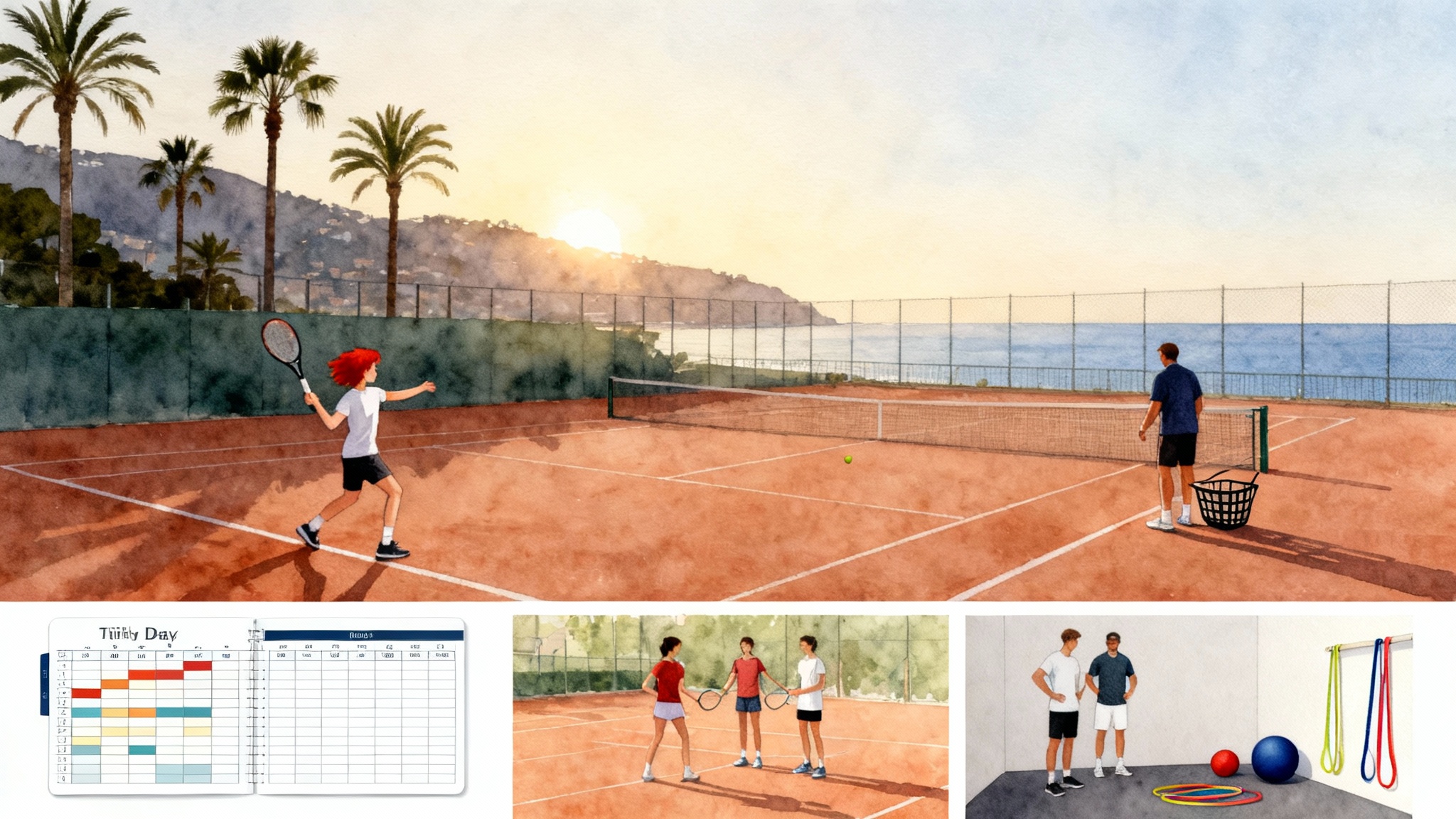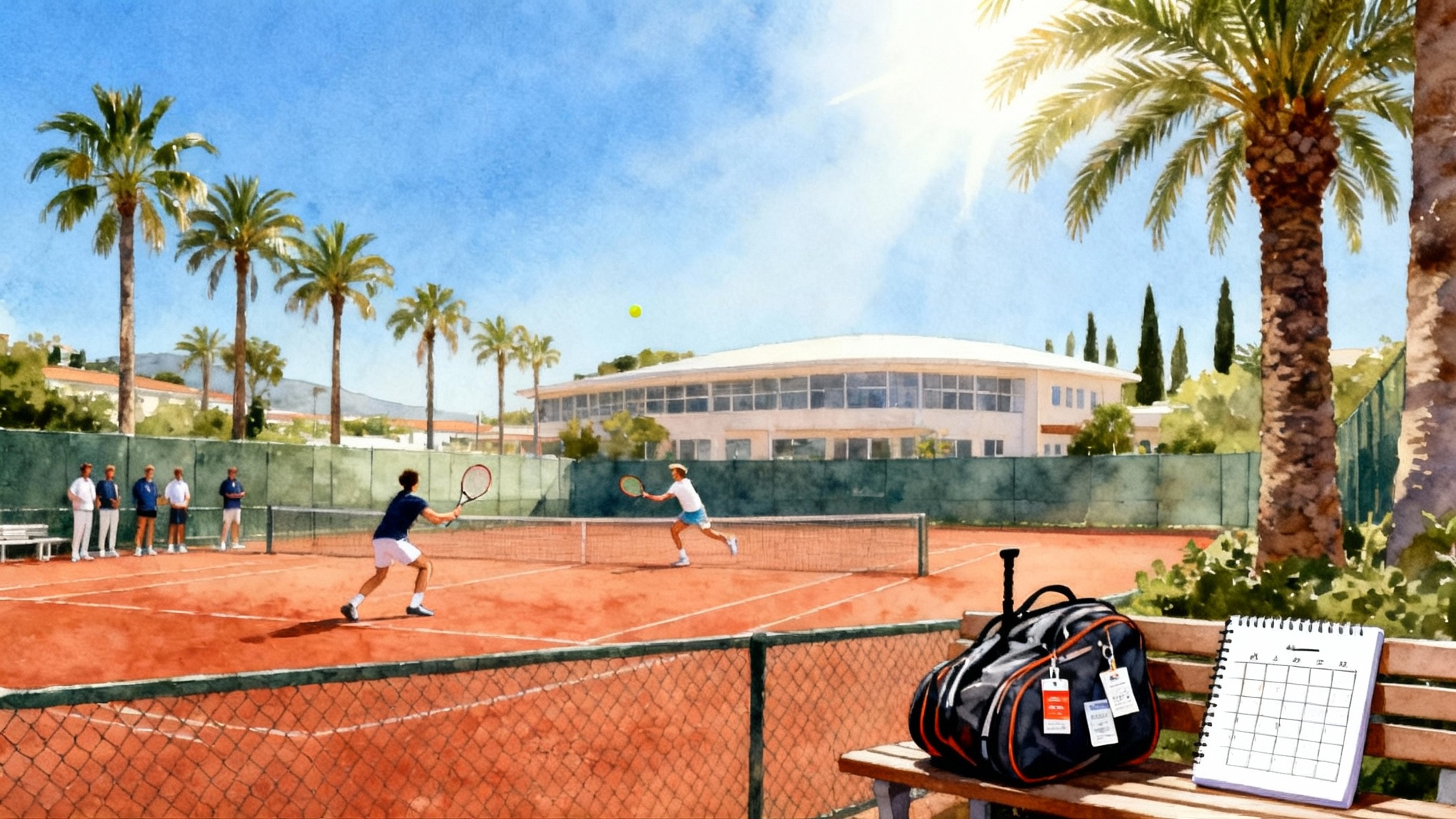Beijing to Barcelona Clay: Zheng Qinwen’s Academy Path
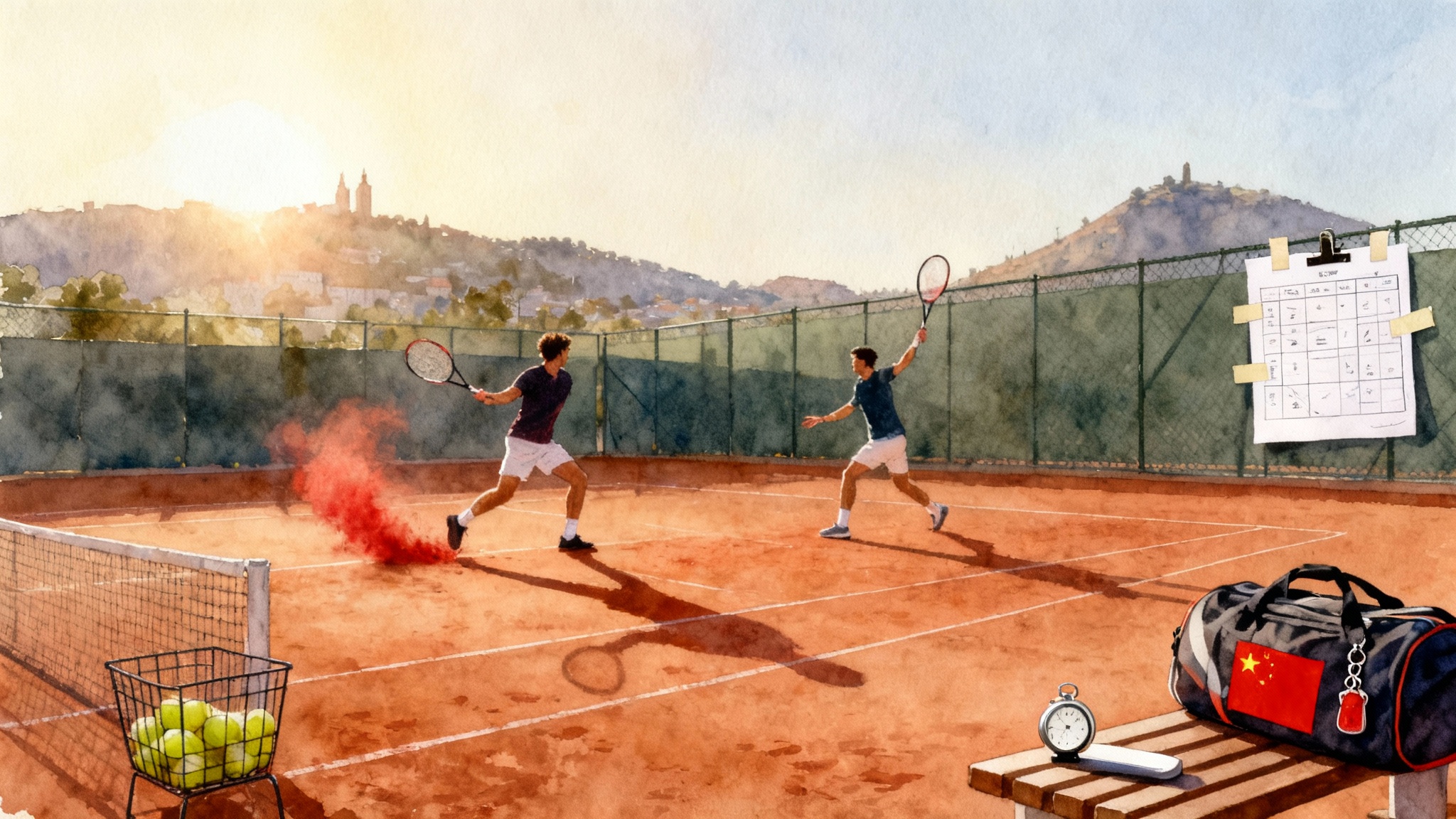
Why this path matters
When parents and junior players ask how to structure the years that turn promise into a professional runway, the best answers are not slogans. They are maps. Zheng Qinwen’s journey is one of those rare maps. She grew up in Hubei, moved to Wuhan for daily training, accepted a place at Carlos Rodriguez’s program at the Potter’s Wheel academy in Beijing, then set up a long stint in Barcelona to work with Pere Riba and to live on clay. Each move had a purpose. Each block of work built a skill that later cashed out in big results, including a run to the 2024 Australian Open final and titles on clay.
This article breaks her path into decisions a family can actually make: when to relocate, why Spain’s training and competition density is so valuable, and how to pivot coaches without losing the thread of development.
Wuhan to Beijing: choosing structure over convenience
At eight, Zheng left her hometown for Wuhan to train full time. A few years later she went to Beijing, where Carlos Rodriguez, the coach who guided Justine Henin and Li Na, had built an environment that looked less like a local club and more like a factory for durable habits. In Beijing, the training was defined, supervised, and consistent. French coach Kevin Boumlil, a Rodriguez disciple who worked with Zheng there, describes a scholarship, a clear plan, and daily standards for technique, tactics, and routines in Boumlil’s detailed interview. He explains that by 15, her technique, tactical understanding, and structure were already solid.
What does structure mean in practice? It is not just doing more hours. It is a calendar that alternates skill-building and test events, a daily script for warm up and cool down, a language that all coaches on court share, and a checklist of technical positions that must be repeated until they happen under pressure.
A sample “Beijing phase” week families can adapt
- Monday: two court sessions that isolate the first four shots of every point. Serve plus first ball in the morning, return plus first ball in the afternoon. Forty minutes of movement patterns with a medicine ball.
- Tuesday: neutral rally stability. Thirty to fifty ball rally targets, then neutral-to-offense transitions. Evening video review for twenty minutes, with two focus clips per stroke.
- Wednesday: off feet morning, strength and coordination in the gym, then controlled point play in the afternoon with serve rotations. Five minutes of closing routines, including breath work and written notes.
- Thursday: cross training for freshness, then patterns to the backhand corner and backhand up the line. Ten minutes of return variety at the end.
- Friday: practice sets with constraints, for example, first strike must land inside the big cross target, or one rally per game must exceed fifteen balls.
- Saturday: match play with scoring goals that reward decision quality, not just the final score.
- Sunday: rest, body care, and recap. Two written lines each on what improved, what confused you, and what to try next week.
The mechanism that matters here is repetition with context. When the same language is used daily, technical fixes survive match stress. That is why, in Boumlil’s telling, Zheng’s base was firm at 15. There is a lesson for families: if your child is being fed a new technical model every few weeks, it is time to consolidate rather than add more inputs. Progress accelerates when the rules do not change.
Beijing to Barcelona: when to go international
Zheng’s family chose to leave China as she stepped into higher-level junior and entry pro competition. Spain was the target. The reason is not mystical. It is a math problem. Spain offers a high concentration of sparring partners, a tournament calendar that allows back-to-back play within short drives, and a clay culture that stretches a player’s patience and point construction. An official Roland Garros feature spells out the change: after formative years with Carlos Rodriguez in Beijing, Zheng moved to Spain, trained in Barcelona, and teamed up with Pere Riba to sharpen a more patient, complete game on clay. She confirmed that the Spanish training block transformed her consistency and resilience in long rallies in this Roland Garros player feature.
In Barcelona, the day-to-day picture is concrete: clubs like Els Gorchs and many in the metro area run on clay through most of the year. Players cycle from high-intensity drilling to sets to physical work without needing long travel days. The density of good practice partners means the floor, not the ceiling, rises quickly, a dynamic we also saw in de Minaur’s Spanish club roots.
Why clay-heavy blocks work
Clay turns point building into a skill, not a slogan. On clay, bad spacing is punished, short crosscourt replies are countered, and heavy spin creates time to adjust or pressure to defend. Spend twelve to sixteen weeks each year in that environment, and your offensive decisions tighten on every surface. That is why players with aggressive tools, like Zheng’s serve and forehand, still benefit from a Spanish block. They learn to open the court without rushing, to layer patterns instead of gambling, which echoes lessons from Alcaraz’s JC Ferrero Academy path.
A clay block families can actually schedule
- Block length: ten to twelve weeks, split into two phases with a three to five day reset between them.
- Phase one focus, four to six weeks: spacing and height. Every rally begins with a depth target line. The second touch must be deep middle third, the third touch to a corner, then look for a forehand from inside the baseline.
- Phase two focus, five to six weeks: serve patterns and patterns after neutral. Two specific serve plays to the deuce court, two to the ad court. On return games, measure success by rally length and field position rather than pure break percentage in practice.
- Match play: build a three tournament mini-tour within two hours of Barcelona by car. The goal is four to six matches in fourteen days, then back to the practice block.
- Fitness thread: simple, frequent lower body strength, medicine ball throws for rotation, jump rope intervals for rhythm and footwork.
Cost control is part of the plan. Pick a residential base near a suburban club, share a rental car among two players, and book tournaments that do not require flights. The Spanish calendar lets you string together competitive weeks without crossing borders, the same density advantage highlighted in Ruud’s Nadal Academy progression.
Coach continuity through pivots
If you follow Zheng’s results line, you also see coaching changes. That can scare families who equate change with starting over. What Zheng’s case shows is that continuity does not mean never changing the face in the chair. Continuity means a core playbook and a shared language that survive change.
- Core one: technique and tactical frame largely built in Beijing under Rodriguez and his staff. That carried forward.
- Core two: a clay-informed decision tree built in Barcelona with Riba. The structure taught her to create space before finishing points.
- Pivots: as Zheng moved through the Women’s Tennis Association level, there were periods with a different lead coach. The through lines were her forehand patterns, return habits, and the practice structure that Rodriguez and Riba had both helped define. In December 2023 she reunited with Riba, aligning with a strong 2024 season.
For a family, the takeaway is specific. Before you change coaches, write down your player’s non‑negotiable language. For example: two return shapes, three serve patterns, two rally length goals, and one default defensive swing height. If the new coach can speak that language and add detail, the pivot will likely accelerate progress rather than reset it.
How the clay and continuity showed up in results
- First tour title on clay in 2023 in Palermo. That is the classic sign that the clay block is not just cross training, it is a weapon. She did not only survive on clay, she won there. The mechanism is patterning. Serve plus forehand built pressure, but the rally skills she learned on slower courts allowed her to absorb, reset, and build the next chance.
- A major final on a hard court in 2024 in Melbourne. The same patience that clay demands allowed her to manage scoreline swings and still look for forehand takes inside the baseline. Clay taught her to accept long rallies without panic. On hard courts, that looked like composure in neutral exchanges and clearer decisions on short balls.
Notice the sequence. Clay did not make her cautious. It made her accurate. Accuracy made her aggression more frequent because she got to hit the forehand she wanted more often and from better positions.
Turning Zheng’s path into your plan
Here is a practical checklist any family can use. It is organized by the same gates her family passed through.
Gate 1: are you ready to relocate for structure
- Does the current program give your player a consistent daily language and a developmental plan that spans the next six to twelve months, not just the next tournament
- Is the technical model stable, with only one or two clear adjustments in progress per stroke
- Do you have a mentor coach who sees the whole picture, not just a weekly sparring partner schedule
- If the answer to any of these is no, a move to a more structured base can pay off. Your signal is stagnation in habits, not in results. If matches look chaotic every week, the training inputs are probably chaotic too.
Action: interview academies with a notebook. Ask to see a real weekly plan, not a brochure. Ask how the staff aligns its language. Sit in on one session and watch whether coaches cue the same checkpoints for different players.
Gate 2: is Spain the right seasonal base
Spain is not the only answer. It is a reliable answer because of its density. You get many quality practice hours and competitive reps without heavy travel. That is what Zheng leveraged in Barcelona.
- Decide whether you need a continuous stay or two shorter blocks. If school or budget limit time abroad, two four week blocks can add up to real change.
- Build a mini tour. Look at a five to six week window of regional events within short driving distance and plan a two on, one off rhythm for matches and training.
- Assemble a two page player dossier in English and Spanish that lists your goals, constraints, and preferred training times, then send it to clubs or academies in Barcelona before you arrive.
Action: book accommodation within walking distance of courts and a supermarket. The success of a clay block often comes down to recovery and routine, not one heroic session.
Gate 3: managing coaching pivots without losing momentum
- Before a change, document your player’s anchors. Examples: return from one step inside the baseline on second serves, target deep middle first, then play forehand to backhand corner. On defense, lift above net height and aim big cross first. On serve, two patterns per side with a clear third ball intention.
- Share this with any new coach on day one. Invite the coach to challenge or refine it, but ask them to keep the core language intact for a set period, for example eight weeks.
- Keep a simple scorecard. After each week, note one skill that became more stable and one that did not. If stability is not improving after six to eight weeks, you might be mixing languages again.
Action: appoint one person to be the keeper of the playbook. It can be a parent or a lead coach. The job is to keep the language the same from Monday to Saturday, and from practice court to match court.
What parents can copy tomorrow
- A three line daily brief. Before practice, write one technical cue, one tactical cue, and one grit cue, for example, two more returns per game, or higher net clearance when defending. After practice, record whether those cues improved.
- A two tournament spike with a training valley between. Pick two events within a three hour drive, then insert a five day practice valley between them with no travel and a narrower focus. That rhythm mimics the way Spanish blocks create improvements that hold.
- A partner map. List five practice partners at the right level and a weekly text habit to confirm hit times. Density is not only about geography. It is about consistent scheduling.
A short case study timeline
- Ages 8 to 11: residential training in Wuhan. Goal, daily habits and love of the game.
- Ages 11 to mid teens: Beijing with Carlos Rodriguez and staff. Goal, technique and tactical structure. Scholarship support, daily clarity, and a professional rhythm. Documented by coaches who were there, including Boumlil.
- Late teens onward: Barcelona base with Pere Riba. Goal, clay patience, competition density, and a more complete attack. Confirmed in the official tour coverage that describes her move and the Barcelona training base.
- Payoff: tour titles including on clay and a Grand Slam final on hard. The method was not a miracle. It was sequence, environment, and a shared language.
The bigger takeaway
Zheng Qinwen’s path shows that the order of decisions matters. Build a language first in a structured academy. Move to a region that pressures your skills in every rally and offers many matches without flights. Protect your core language as coaches and contexts change. The implication is powerful for families. You do not need a perfect coach, a famous logo, or a blank check. You need a sequence in which every decision has a job.
The map is there. Follow it with your own constraints, write your player’s simple playbook, and choose environments that force the right habits. Done well, those choices compound. One day you will look up and notice that the patience you built on clay is winning points on hard courts, the routine you drilled in academy parking lots is still running in big stadiums, and the language you protected through pivots is the thing that keeps development moving when the tour gets loud.
That is how a path from Wuhan to Beijing to Barcelona becomes more than a biography. It becomes a blueprint.
